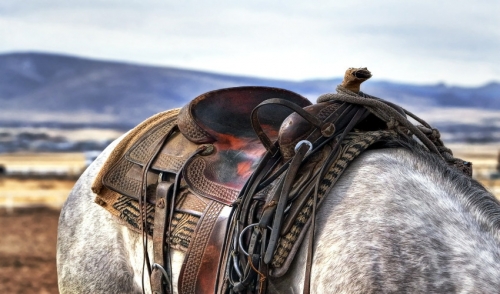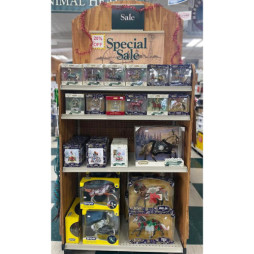{article.name}
Stay Informed
Sign up for email list
for exclusive offers, information and updates!
View our Email Archive
Is Your Tack Safe? Here's How to Check

- Share this:
- Share on Facebook
- Pin on Pinterest
- Tweet on Twitter
The proper tack is essential for safe, comfortable riding for both you and your horse, but how can you check your tack for safety? No matter whether you use English or western gear, these simple steps can keep you, your horse and your tack safe.
- Always Check Your Equipment: Every time you plan to ride, without exception, check your tack carefully. Look for signs of wear, including rust, cracks, fraying, thinning, splintering, protruding nails or screws, tears or hole strain. If there are any signs of wear, do not use the tack and instead replace it promptly. Even if the wear is minimal, sudden stress on the tack could cause dangerous problems.
- Keep Tack Supple: Take proper care of your tack to keep it strong and supple. Clean it regularly with a leather-safe soap, and use leather conditioner to keep it in good condition. At the same time, clean all wooden and metal parts of your tack as well, keeping them in top shape for safe, comfortable rides.
- Check Proper Sizing: The right-sized tack is essential for your safety and the safety of your horse. As young horses grow or adult horses gain or lose either fat or muscle, their tack sizes can change. If tack is too loose it will not provide a firm, secure fit, and too-tight tack can cause discomfort that could agitate your horse and cause accidents.
- Clean Your Horse: Just as you need clean tack, your horse should be clean as well. A pebble, burr, splinter or other piece of debris could become caught under tack and cause irritation that could create an unstable mood in your horse, leading to balky behavior and horse-rider miscommunication.
- Watch for Injuries: Check your horse for injuries or irritations that may be caused by tack after every ride. Look for swelling, bruises, sores, cuts or abrasions that may indicated poorly-fitted tack or other problems. If you do find an injury, double-check the associated tack for any difficulties, and do not ride again until your horse has recovered.
- Minimize Theft Risk: Not only do you need to keep your tack safe for you and your horse, but you need to keep it safe from theft or tampering. Always keep tack in a secure room with a sturdy lock, and consider adding nameplates or stamps to your tack so it can be easily identified if lost or stolen. Security lights, video surveillance, and guard dogs are other reasonable steps to take to keep your tack safe.
Worn, damaged or improper tack can cause numerous problems, including irritation or injuries to your horse as well as dangerous accidents. Taking the proper steps to be sure your tack is safe should be second nature every time you handle your saddle, bridle, halters, stirrups, and other gear, and once you develop the habit of checking your tack carefully, you can be more confident that every ride will be a safe, comfortable one.
Special Offers

Special Sale! ( Print This )
Enjoy 20% OFF Breyer holiday horses, snow globes, and ornaments! Not valid with any other discounts or sales.
Offered By: Country Corner Feed & Tack, LLC

Comments